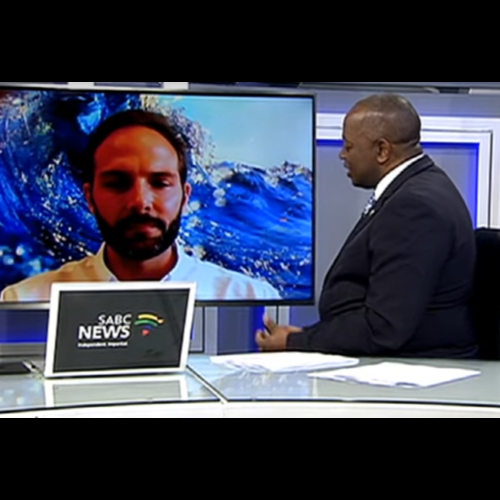SAWS Marine Chief Scientist on storm surge and wave forecasting on SABC News

Posted on 30 April 2019
Following the recent cyclone activity in Mozambique and devastating coastal inundation which took place, the SABC spoke to Dr. Christo Rautenbach about storm surge, and how the SAWS Marine Unit has started forecasting this phenomenon around Southern Africa.
Mozambique has been the victim of two devastating cyclones, with Cyclone Kenneth following Cyclone Idai by little more than a month. It is unprecedented for the country to experience two cyclones in one season, much less two of such severity, which have resulted in the country being set back years in terms of recovery. Intense tropical cyclone Idai made landfall on 15 March near Beira, leaving over 1000 people dead across its wake, and becoming the most costly tropical cyclone for the South-West Indian Ocean at approximately US$ 1 billion. Tropical cyclone Kenneth, a category 4 storm, has left 38 dead in Mozambique so far and will likely drop twice as much rain as Idai did a month earlier.
These vulnerable regions along the Mozambique coast experienced incredible storm surges due to these cyclones, resulting in an abnormally raised sea level and consequent coastal inundation. On top of this, intensified wind-induced wave action from the storms and torrential rain caused rivers to flood and burst their banks. All this resulted in an unprecedented loss of life, extreme infrastructure devastation, flooded farm-lands with saline waters, water-borne disease outbreaks and communities cut off from life-saving support.
The Marine Unit at the South African Weather Service has developed wave, storm surge and tidal forecast models for the South African coast with a view to predicting the impacts storms will have on our regions. This assists in preparing disaster management and coastal municipalities to safeguard vulnerable communities. While South Africa is seldom affected by cyclones, devastating storms do occur along our coast periodically, posing a risk to our coastal communities.
The SAWS Marine Unit has the capability to extend these systems to our neighbouring regions, but much would need to be done to validate their outputs along these incredibly long coastlines. Further, communication of marine meteorological information via appropriate disaster management structures to those in peril is equally important. Dr. Christo Rautenbach outlines some of these concepts in the interview linked below: